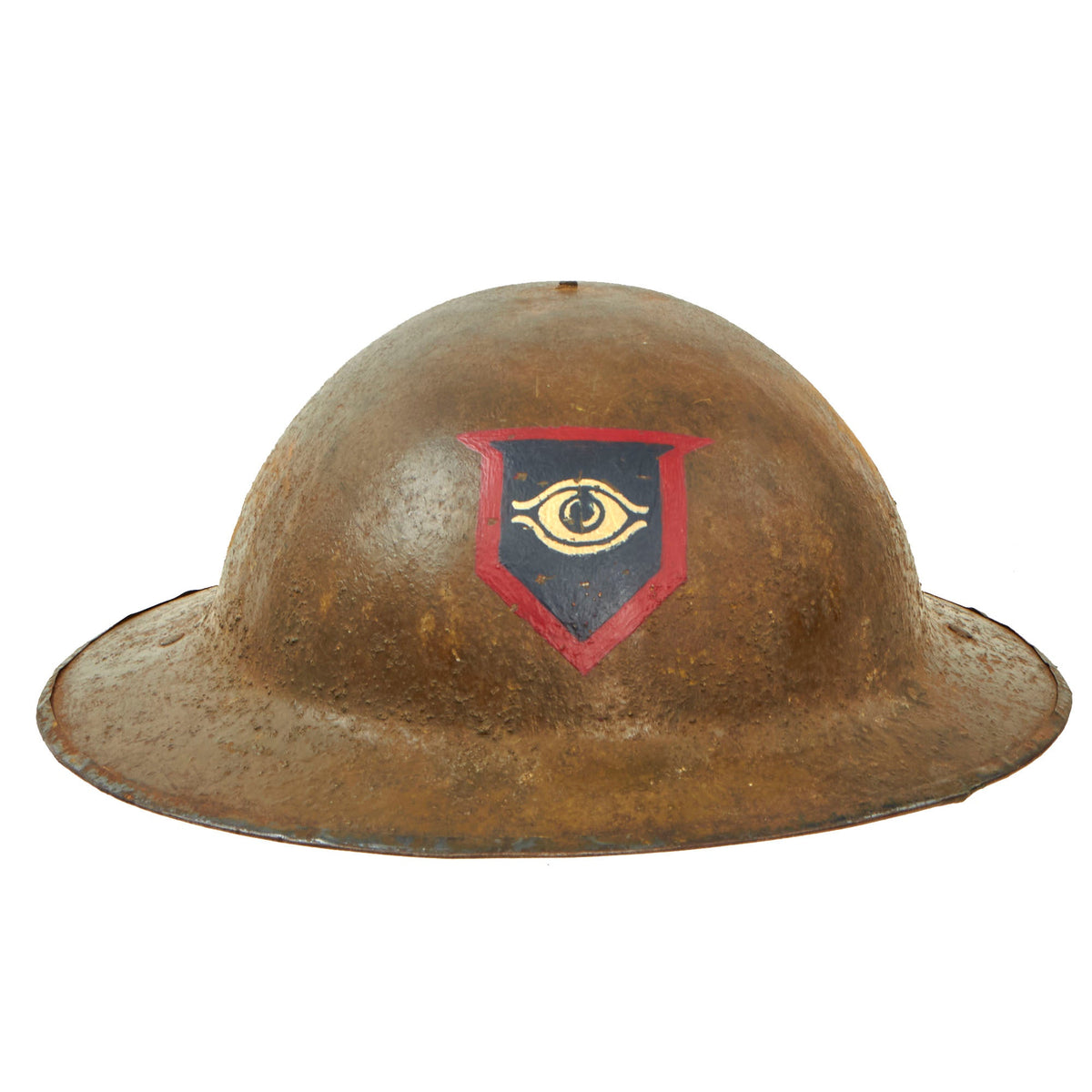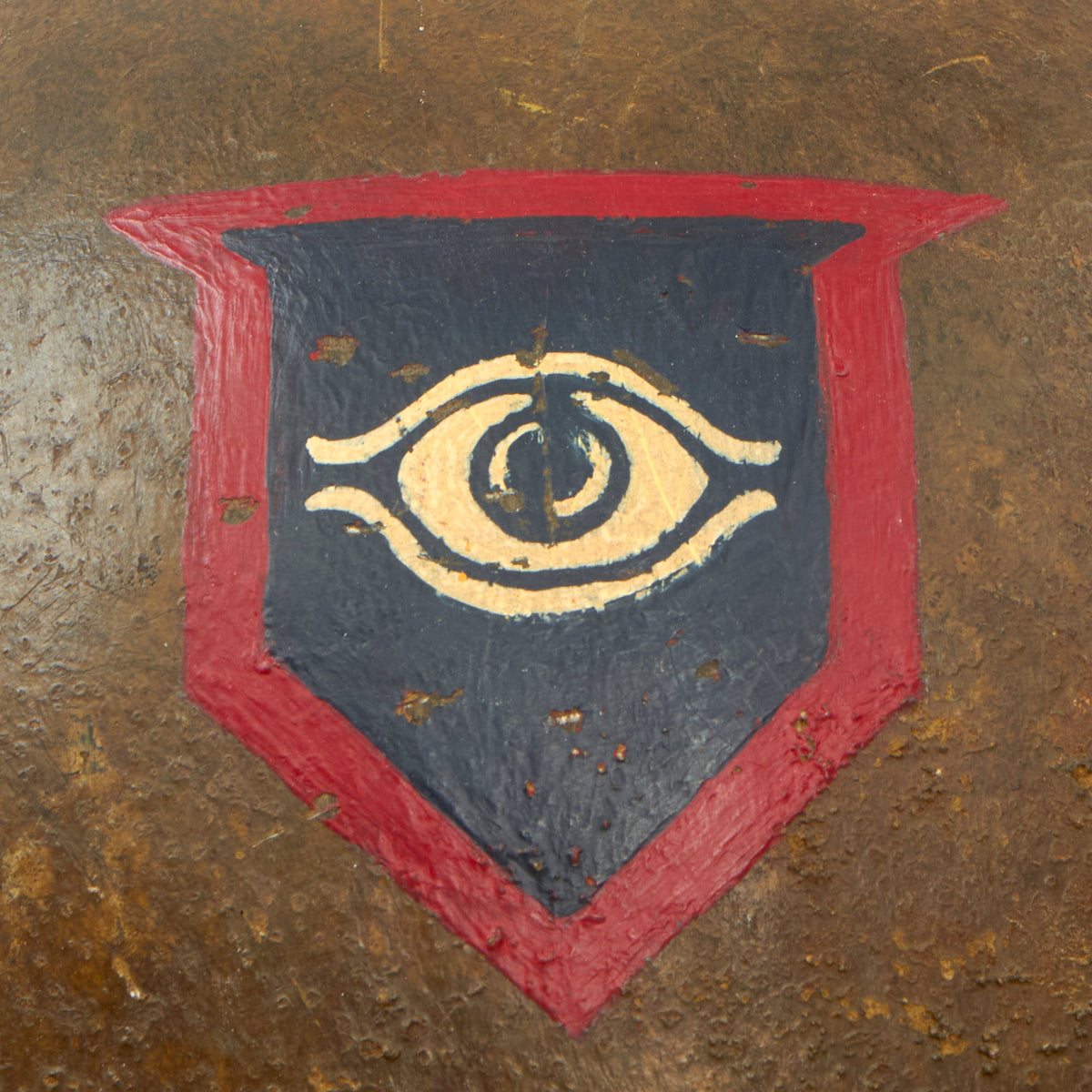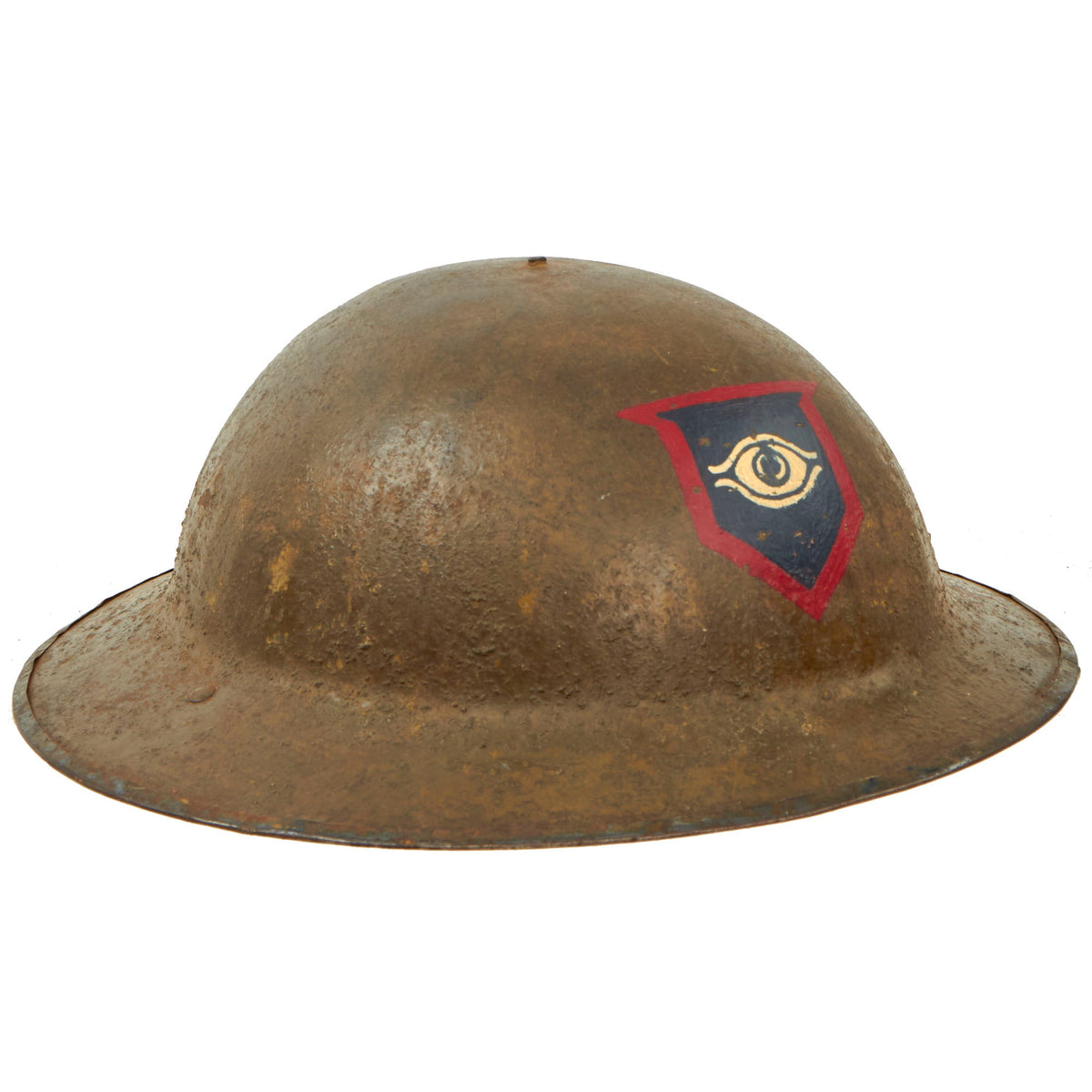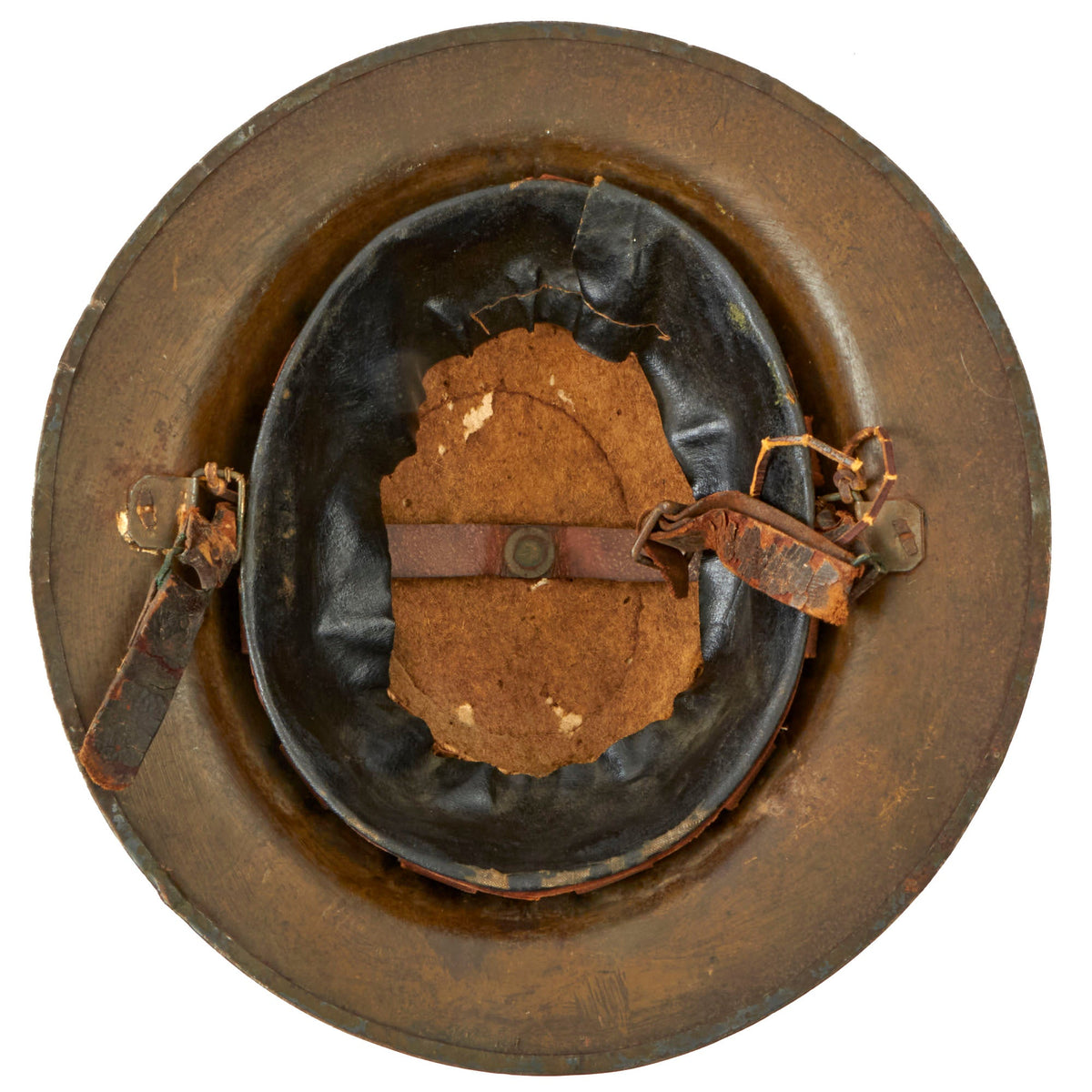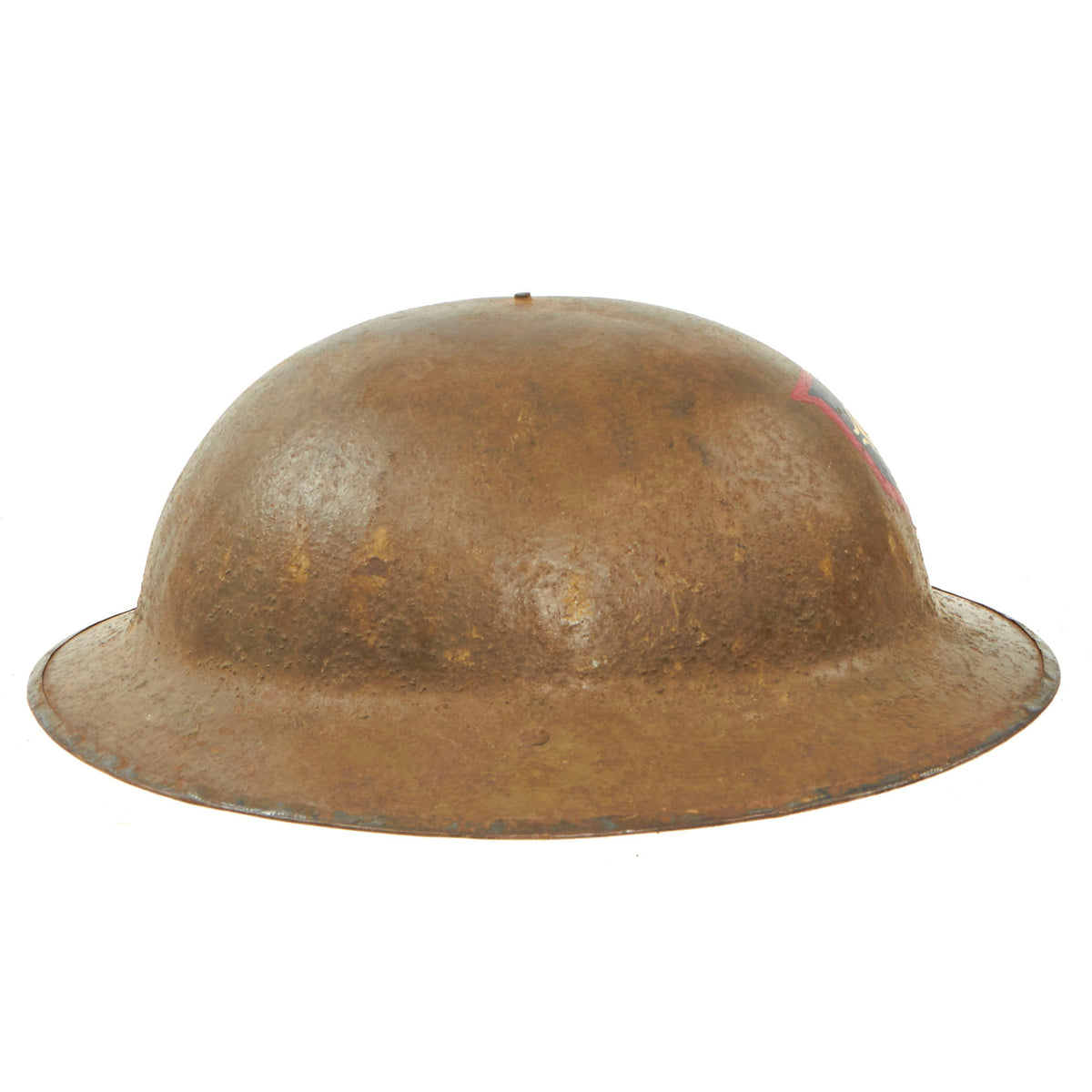Original British WWI Texture Painted Mk 1 Brodie Helmet by Hutton & Sons Ltd of Sheffield With Late War Guards Division Painted Insignia – “All Seeing Eye” Original Items
$ 595,00 $ 178,50
Original Item: Only One Available. This is a lovely example of the scarce WWI British MkI Brodie helmet, which was also the same type that was issued to American forces in the beginning of the US involvement during The Great War. The shell features great textured paint that was a very popular paint scheme used by all armies that fought during WWI.
The All Seeing Eye painted on the front of the shell is the unit flash for the Guards Division and is a late war example, the same type that was utilized during WWII. The Second World War sign was a somewhat simplified version of the sign worn by the Guards Division during the First World War. The original badge was designed by Major Sir Eric Avery (who commanded the Divisional MT Company) and the Second World War version was chosen from a number of designs painted on divisional vehicles by Rex Whistler, who was serving in the 2 Welsh Guards, Divisional Armored Recce. unit. The sign represents the eye of vigilance, red and blue being the Household Brigade colors.
At the outbreak of World War I, none of the combatants provided steel helmets to their troops. Soldiers of most nations went into battle wearing cloth, felt, or leather headgear that offered no protection from modern weapons.
A significant partial exception to this lack was the German pickelhelm. Like other army helmets of 1914, it was made out of leather; but it also had a significant subset of steel inserts that offered some head protection. This includes the top spike, originally used to stop strikes from an enemy hand-held saber.
The huge number of fatal head wounds that modern artillery weapons inflicted upon the French Army led them to introduce the first modern steel helmets in the summer of 1915. The first French helmets were bowl-shaped steel “skullcaps” worn under the cloth caps. These rudimentary helmets were soon replaced by the Model 1915 Adrian helmet, designed by August-Louis Adrian. The idea was later adopted by most other combatant nations.
The heat stamp on the underside of the rim is HS 316. This is the typical marking where the designation of Manufacturer followed by designation of steel supplier followed by batch lot number of steel used. H is for Hadfield Ltd of Sheffield who made helmets. S is for the steel supplier of Sheffield who provided the needed material for the helmets. The heat stamp and the split rivets on the chinstrap bales are a solid indication and a good reference point for identifying British made helmets for American use during the Great War.
The liner is also in quite nice shape, with a very good oil cloth liner, and the top felt pad is present but not the rubber “donut” underneath. The chin strap is partly present.
This is a wonderful example of a mid war produced British MkI Brodie Helmet. Comes more than ready for display.
Fast Shipping with Professional Packaging
Thanks to our longstanding association with UPS FedEx DHL, and other major international carriers, we are able to provide a range of shipping options. Our warehouse staff is expertly trained and will wrap your products according to our exact and precise specifications. Prior to shipping, your goods will be thoroughly examined and securely secured. We ship to thousands clients each day across multiple countries. This shows how we're dedicated to be the largest retailer on the internet. Warehouses and distribution centres can be located throughout Europe as well as the USA.
Note: Orders with more than one item will be assigned a processing date depending on the item.
Before shipping before shipping, we'll conduct a thorough inspection of the items you have ordered. Today, the majority of orders will be delivered within 48 hours. The delivery time will be between 3-7 days.
Returns
The stock is dynamic and we cannot completely manage it because multiple stakeholders are involved, including our factory and warehouse. So the actual stock may alter at any time. It's possible that you may not receive your order once the order has been made.
Our policy is valid for a period of 30 days. If you don't receive the product within 30 days, we are not able to issue a refund or an exchange.
You can only return an item if it is unused and in the same state as the day you received it. You must have the item in its original packaging.
Related products
Uncategorized
Uncategorized
Uncategorized
Australian WWII Owen MK1 Machine Carbine SMG Custom Fabricated Replica with Sling Original Items
Uncategorized
Uncategorized
Uncategorized
Uncategorized
Uncategorized
Uncategorized
Uncategorized
Uncategorized
Armoured Fighting Vehicles of the World: AFVs of World War One (Hardcover Book) New Made Items
Uncategorized
Uncategorized
Uncategorized
Uncategorized
Uncategorized
Uncategorized
Uncategorized
Uncategorized
Uncategorized
Angolan Rebel 1970s era 60mm Inert Display Mortar from Angolan Civil War Original Items
